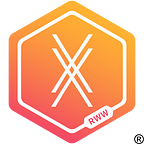Pebbling, An Old Game, With a New Lesson for Web 4.0
By Alex Hertel, Co-Founder & CEO of Xperiel
Pebbling is a board game adapted for use in advanced computer science classes to model the basic rules of computing.
We learned about Pebbles when we studied Computer Science in grad school. Players move pebbles (the game pieces) around a graph. In this context, a pebble is a bit that is on or off. This isn’t something made by Milton Bradley. There is no winning or losing the game to a competing player. The opponent is yourself. Playing the game helps you explain how computations are encoded. This way, you draw code with the Pebbles patterns and relationships, you don’t write it. It is spatial, graphical, and entirely visual. No coding is required. It is instead a model of computation.
Computer Science uses Pebbles to prove theorems. Ivory tower stuff. Since Phillip and I are a couple of eggheads who care about things like this, Pebbles was the topic of our Ph.D research. Pebbling is so simple that a five-year-old can intuitively understand it, but also very powerful: we used pebbling diagrams to describe complex computing.
As we wrung our hands about the complexity of computing, we started thinking about Pebbles again, but in a different way. There are many great computer scientists who are brilliant at Pebbles but they tend not to program. What if each bit that is on or off was a self-contained program action that is moved around graphically to where it needs to be in a sequence? This approach is relatively easy to understand, does away with the repetition of code, and is very powerful, because the self-contained program actions are based on spatial 3D computing, not Web 3.0, which is a work-around built upon a work-around that few can master. IoT and AR didn’t exist ten years ago when the mobile web was built. Web 3.0 and in particular mobile could not exist without Javascript, but it’s gone too far now. It’s no longer a help; it’s a hindrance. Today, our sites need to be 3D, multiplatform and multi-use. When Java was invented in the 90s, 3D, IoT, sensors and AR didn’t exist. All of this is built natively into Pebbles from the ground-up, which makes adding this kind of multi-platform edge computing functionality into a graphic grab and drag feature.
This is the reason we named our programming language after Pebbles. It doesn’t feel like programming. It’s more like drawing a flowchart. There is a learning curve, and not everyone can do it, but it is much more accessible to non-technical people than any traditional programming language, and can be done much more quickly and accurately.
Pebbles helps three different types of people.
(1) Non-tech people like product managers, marketers, designers
(2) Computer scientists who are not engineers: 75% of CS degree holders don’t become coders, but when they see pebbles a lightbulb turns on
(3) Pro software engineers, who can save time, and attain superpowers
I’ll give you some great examples: We have folks from non-technical backgrounds using Pebbles to build professional software products — that shouldn’t be possible. We’ve also got folks with computer science degrees but who aren’t software engineers using our system and suddenly they become software engineers who can program anything on Pebbles.
People have been trying to build an easier programming language for decades, but dumbing them down doesn’t work. Change the concept, change the interface, put the programming in the background, and we’ll have an army of programmers.
The co-founder and CEO of Xperiel, Alex Hertel is an inventor who completed his Ph.D. in computer science at the University of Toronto and is an expert on the use of immersive technologies to make the physical world digitally interactive. He previously co-founded Walleto which was acquired by Google and became Google Wallet.
